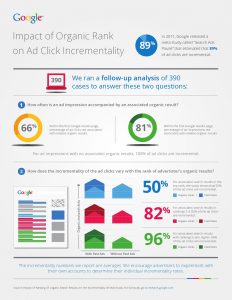
One of the most important aspects of search engine optimization is converting visitors into customers. This process is done through A/B testing and measuring the impact of changes to a website. While traffic volume is important, behavior is what makes a difference between a successful business and a failure. Previously, conversion rate optimization (CRO) was difficult and time-consuming, but today’s software makes it simple. With the Optimizely visual editor, you can make changes to your site without touching a line of code.
Using complex mathematical algorithms, search engines use information on web pages to determine their relevance to a particular keyword. The more inbound links a website has, the higher it will rank on a search. A site with one inbound link, like a news article, will still rank highly in a search if it is linked from a popular website. However, this doesn’t always happen. Search engines are constantly tweaking their algorithms, so it’s important to maintain your website’s content and optimize it to be as relevant as possible.
A website’s relevance to a particular keyword is determined by Google’s algorithm. It takes into account keywords and other factors to determine relevance and quality. Google also looks at how a site looks on different browsers and devices. The quality of a website’s content and the speed at which it loads depends on how well Google’s algorithm recognizes the relevance of a web page. This is how Google determines which pages to rank.
However, the use of search engines is not universal. While Google may be number one in the world, it is not popular in China. Search engines like Google are a great tool for finding businesses on the Internet and passive marketing. Search engine optimization (SEO) is one of the most effective forms of passive marketing but is time-consuming and often slow for small business. When properly applied, SEO can be effective in the medium to long term, but often times it is too slow for new businesses.
Content creation is an important component of SEO. Content should answer the question that the searcher is looking for. In addition to content, pages should also load quickly. If the page is too slow to load, visitors will leave the site. You can use Google’s PageSpeed Insight tool to determine which parts of your content load the fastest. By implementing these strategies, you can ensure the highest level of SEO for your website. That way, you can attract the best visitors and convert them into customers.
Ultimately, search engine optimization is all about making your website more visible to consumers. With a higher ranking, you will get more exposure and boost your brand awareness. In the end, SEO will result in more traffic, more sales, and more profits. In fact, it is estimated that up to 40 percent of online searches originate from search engines. By increasing your website’s ranking on a search engine, you’ll be able to capture traffic from TV ads and other advertising mediums.
The best SEO practices include using keywords and content that are relevant to your business. Google also has its own rules that make it harder for websites to manipulate search engine rankings. There’s no need to rewrite SEO forever. You can always start by tweaking your website’s content. You can improve your rankings by using Google’s analytics to see where you’re falling short. But remember that SEO isn’t free. It costs money, but it provides you with valuable data you need to make wise decisions.
While content and SEO work in harmony, it’s important to understand your audience’s search intent. Keywords are important, but they don’t tell the whole story. You can learn more about the customer’s journey through Google by researching the voice of the customer. You can also incorporate keywords throughout the body of content. If you can make it clearer, users are more likely to click on your website – and that’s the end goal.
Social media has a major role in SEO. The more popular social networks are, the more likely Google will consider your site relevant. It’s not just content that affects SERPs – it’s also how users interact with it. In addition to content, social signals can influence organic traffic. Incorporating social media into your SEO strategy can help you attract more customers and increase sales. Your business won’t grow if you can’t convert search traffic into customers.







